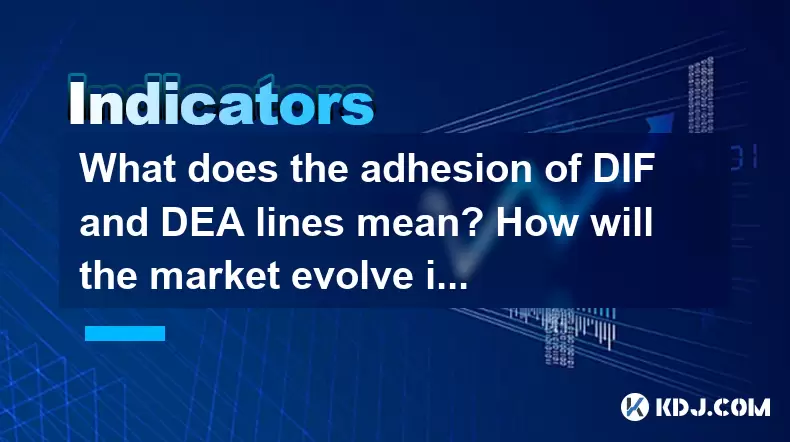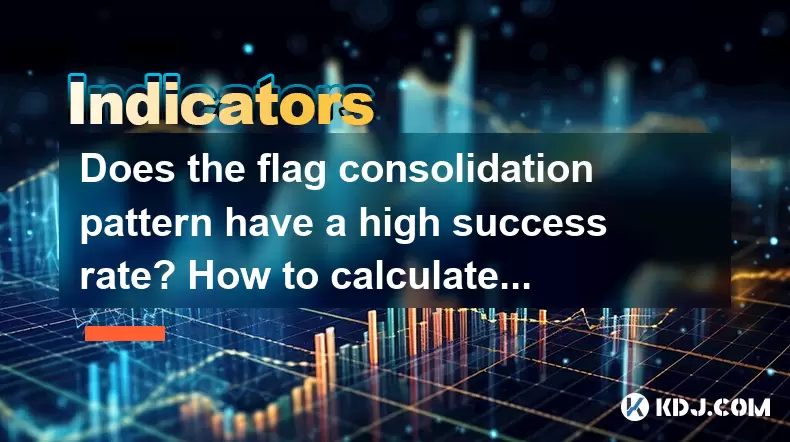-
 Bitcoin
Bitcoin $105,278.9859
4.61% -
 Ethereum
Ethereum $2,414.7741
8.20% -
 Tether USDt
Tether USDt $1.0007
0.05% -
 XRP
XRP $2.1600
7.53% -
 BNB
BNB $639.5433
3.75% -
 Solana
Solana $144.3830
9.37% -
 USDC
USDC $1.0001
0.02% -
 TRON
TRON $0.2742
3.84% -
 Dogecoin
Dogecoin $0.1640
8.57% -
 Cardano
Cardano $0.5811
7.49% -
 Hyperliquid
Hyperliquid $37.2466
5.28% -
 Sui
Sui $2.8243
14.84% -
 Bitcoin Cash
Bitcoin Cash $460.8816
2.22% -
 Chainlink
Chainlink $12.9580
11.75% -
 UNUS SED LEO
UNUS SED LEO $9.1359
1.23% -
 Avalanche
Avalanche $18.2302
10.30% -
 Stellar
Stellar $0.2463
7.80% -
 Toncoin
Toncoin $2.9151
7.18% -
 Shiba Inu
Shiba Inu $0.0...01163
9.79% -
 Hedera
Hedera $0.1532
14.01% -
 Litecoin
Litecoin $85.3310
6.29% -
 Monero
Monero $308.8215
2.90% -
 Ethena USDe
Ethena USDe $1.0007
0.03% -
 Polkadot
Polkadot $3.4259
9.42% -
 Dai
Dai $1.0002
0.01% -
 Bitget Token
Bitget Token $4.1742
3.19% -
 Uniswap
Uniswap $6.8272
8.53% -
 Pepe
Pepe $0.0...09939
12.29% -
 Pi
Pi $0.5358
6.03% -
 Aave
Aave $257.3092
12.83%
What is the MA moving average duck head pattern? How to use it in actual combat?
The MA moving average duck head pattern, formed by short-term and long-term MA crossovers, helps traders predict crypto price trends and make informed trading decisions.
May 23, 2025 at 09:07 pm

The MA moving average duck head pattern is a technical analysis tool used in the cryptocurrency trading world to predict potential price movements. This pattern is based on the interaction between different moving averages and is often used to identify trend reversals or continuations. In this article, we will explore what the MA moving average duck head pattern is, how it is formed, and how traders can use it effectively in their trading strategies.
Understanding the MA Moving Average Duck Head Pattern
The MA moving average duck head pattern is named for its visual resemblance to the head of a duck. It is formed by the convergence and divergence of two or more moving averages. Typically, traders use a short-term moving average (such as the 5-day or 10-day MA) and a long-term moving average (such as the 20-day or 50-day MA) to identify this pattern.
The pattern is considered complete when the short-term moving average crosses above or below the long-term moving average, forming what looks like a duck's head. This crossover signals potential changes in the market trend. If the short-term MA crosses above the long-term MA, it may indicate a bullish trend, while a cross below may suggest a bearish trend.
Formation of the Duck Head Pattern
To better understand the formation of the MA moving average duck head pattern, let's break down the process step-by-step:
- Initial Convergence: The short-term and long-term moving averages start to converge, narrowing the gap between them. This indicates that the market is reaching a point of equilibrium.
- Crossover: The short-term moving average crosses over the long-term moving average. This crossover forms the "head" of the duck. A bullish crossover occurs when the short-term MA crosses above the long-term MA, while a bearish crossover happens when it crosses below.
- Divergence: After the crossover, the moving averages start to diverge again, confirming the new trend direction. The greater the divergence, the stronger the signal.
Identifying the Duck Head Pattern on Charts
To identify the MA moving average duck head pattern on a chart, traders should follow these steps:
- Select Moving Averages: Choose a short-term and a long-term moving average. Common combinations include the 10-day and 20-day MAs or the 5-day and 50-day MAs.
- Plot the MAs on the Chart: Add both moving averages to your trading chart. Most trading platforms allow you to easily add multiple MAs with different time periods.
- Monitor for Convergence: Watch for the short-term and long-term MAs to start converging. This is the first sign that a duck head pattern might be forming.
- Observe the Crossover: Look for the short-term MA to cross over the long-term MA. This crossover forms the duck's head and is the critical point of the pattern.
- Confirm Divergence: After the crossover, monitor the MAs for divergence. This confirms the validity of the pattern and the potential new trend.
Using the Duck Head Pattern in Actual Combat
Traders can use the MA moving average duck head pattern to make informed trading decisions. Here are some practical ways to apply this pattern in real trading scenarios:
- Entry Points: Use the crossover of the short-term MA over the long-term MA as a signal to enter a trade. A bullish crossover (short-term MA above long-term MA) suggests a buy signal, while a bearish crossover (short-term MA below long-term MA) indicates a sell signal.
- Exit Points: The divergence of the MAs after the crossover can help traders determine when to exit their positions. If the divergence strengthens, it may be a good time to take profits. Conversely, if the MAs start to converge again, it might be a sign to exit the trade to avoid potential trend reversals.
- Stop-Loss and Take-Profit Levels: Set stop-loss orders below the recent low for bullish trades or above the recent high for bearish trades. Take-profit levels can be set based on the strength of the divergence between the MAs.
Combining the Duck Head Pattern with Other Indicators
While the MA moving average duck head pattern can be a powerful tool on its own, combining it with other technical indicators can enhance its effectiveness. Here are some popular indicators to consider:
- Relative Strength Index (RSI): The RSI can help confirm overbought or oversold conditions. A bullish duck head pattern combined with an RSI below 30 may indicate a strong buying opportunity, while a bearish pattern with an RSI above 70 could signal a good time to sell.
- MACD (Moving Average Convergence Divergence): The MACD can provide additional confirmation of trend changes. A bullish crossover in the MACD alongside a bullish duck head pattern can strengthen the buy signal, and vice versa for bearish signals.
- Volume: High trading volume can validate the strength of the duck head pattern. A bullish crossover with increased volume suggests strong buying interest, while a bearish crossover with high volume indicates significant selling pressure.
Practical Example of Using the Duck Head Pattern
To illustrate how the MA moving average duck head pattern can be used in real trading, let's consider a hypothetical example:
- Scenario: You are monitoring the price of Bitcoin (BTC) and notice that the 10-day MA is starting to converge with the 20-day MA.
- Crossover: After a few days, the 10-day MA crosses above the 20-day MA, forming a bullish duck head pattern.
- Confirmation: You observe that the 10-day MA continues to diverge from the 20-day MA, indicating a strengthening bullish trend.
- Action: You decide to enter a long position on BTC, setting a stop-loss order just below the recent low and a take-profit order based on the strength of the divergence.
- Monitoring: You keep an eye on the MAs and other indicators like the RSI and MACD to confirm the trend and adjust your stop-loss and take-profit levels as needed.
Frequently Asked Questions
Q: Can the MA moving average duck head pattern be used for all cryptocurrencies?
A: Yes, the MA moving average duck head pattern can be applied to any cryptocurrency. However, the effectiveness may vary depending on the volatility and trading volume of the specific cryptocurrency. It is important to combine this pattern with other indicators and consider the overall market conditions.
Q: How often should I check for the duck head pattern?
A: The frequency of checking for the MA moving average duck head pattern depends on your trading style. For day traders, checking multiple times a day is advisable. Swing traders might check daily or weekly charts. The key is to monitor the moving averages regularly to catch the pattern as it forms.
Q: Is the duck head pattern reliable on its own?
A: While the MA moving average duck head pattern can provide valuable signals, it is not foolproof on its own. It is best used in conjunction with other technical indicators and fundamental analysis to increase its reliability and reduce false signals.
Q: Can the duck head pattern be used for short-term trading?
A: Yes, the MA moving average duck head pattern can be used for short-term trading by using shorter time frames for the moving averages. For example, using a 5-day and 10-day MA can help identify short-term trends and trading opportunities.
Disclaimer:info@kdj.com
The information provided is not trading advice. kdj.com does not assume any responsibility for any investments made based on the information provided in this article. Cryptocurrencies are highly volatile and it is highly recommended that you invest with caution after thorough research!
If you believe that the content used on this website infringes your copyright, please contact us immediately (info@kdj.com) and we will delete it promptly.
- Anthony Pompliano's ProCap: A Bitcoin Treasury SPAC Deal Redefining Finance
- 2025-06-24 12:25:13
- PEPE Coin vs. Ozak AI: Making a Long-Term Bet in the Meme Coin Frenzy
- 2025-06-24 12:25:13
- Ripple (XRP): Breakout Potential or Bust? Decoding the Latest Buzz
- 2025-06-24 12:45:13
- XRP, Ripple, Valuation: Decoding the Future Price
- 2025-06-24 12:45:13
- Midnight Airdrop: Claim Your Free NIGHT Tokens!
- 2025-06-24 13:25:13
- Midnight Airdrop: Grab Your Free NIGHT Tokens, Ya'll!
- 2025-06-24 13:07:11
Related knowledge

Is the large volume limit drop at the bottom a fund accumulation? How to confirm the reversal later?
Jun 24,2025 at 01:42pm
Understanding Large Volume Limit Drops at the BottomA large volume limit drop refers to a situation where the price of a cryptocurrency falls sharply, hitting its lower circuit breaker or minimum daily trading threshold, and is accompanied by unusually high trading volume. When this occurs at what appears to be the bottom of a downtrend, it raises quest...

If the rising channel falls below the lower track, it will definitely fall sharply? In what cases is it a false breakthrough?
Jun 24,2025 at 02:28pm
Understanding the Rising Channel PatternA rising channel is a technical analysis pattern formed by two parallel lines that connect a series of higher lows and higher highs. This structure indicates an ongoing upward trend, with the lower boundary acting as support and the upper boundary serving as resistance. Traders often use this formation to anticipa...

What does the adhesion of DIF and DEA lines mean? How will the market evolve in the future?
Jun 24,2025 at 01:36pm
What Is the Adhesion of DIF and DEA Lines?In technical analysis, particularly within the MACD (Moving Average Convergence Divergence) indicator, the DIF and DEA lines are critical components. The DIF line is calculated as the difference between the 12-day and 26-day Exponential Moving Averages (EMAs) of price data. The DEA line, also known as the signal...

Does the flag consolidation pattern have a high success rate? How to calculate the target position after the breakthrough?
Jun 24,2025 at 01:14pm
Understanding the Flag Consolidation Pattern in Cryptocurrency TradingThe flag consolidation pattern is a commonly observed technical analysis structure within the cryptocurrency market. It typically appears as a brief pause or retracement following a strong price movement, either upward or downward. This pattern resembles a flag on a pole when plotted ...

How to operate when the weekly MACD red column is continuously shortened but the daily golden cross is formed?
Jun 24,2025 at 10:28am
Understanding the Weekly MACD Red Column ShorteningWhen analyzing cryptocurrency markets, technical indicators such as the Moving Average Convergence Divergence (MACD) are essential tools for traders. The weekly MACD red column shortening indicates a weakening of the bearish momentum over the past week. This means that while the market is still in a dow...

What does the continuous rise of the ADX line of the DMI indicator in the downward trend indicate?
Jun 24,2025 at 05:00am
Understanding the DMI Indicator and Its ComponentsThe Directional Movement Index (DMI) is a technical analysis tool that helps traders identify the strength and direction of a trend. It consists of two primary components: the +DI (Positive Directional Indicator) and the -DI (Negative Directional Indicator). The ADX line, which stands for Average Directi...

Is the large volume limit drop at the bottom a fund accumulation? How to confirm the reversal later?
Jun 24,2025 at 01:42pm
Understanding Large Volume Limit Drops at the BottomA large volume limit drop refers to a situation where the price of a cryptocurrency falls sharply, hitting its lower circuit breaker or minimum daily trading threshold, and is accompanied by unusually high trading volume. When this occurs at what appears to be the bottom of a downtrend, it raises quest...

If the rising channel falls below the lower track, it will definitely fall sharply? In what cases is it a false breakthrough?
Jun 24,2025 at 02:28pm
Understanding the Rising Channel PatternA rising channel is a technical analysis pattern formed by two parallel lines that connect a series of higher lows and higher highs. This structure indicates an ongoing upward trend, with the lower boundary acting as support and the upper boundary serving as resistance. Traders often use this formation to anticipa...

What does the adhesion of DIF and DEA lines mean? How will the market evolve in the future?
Jun 24,2025 at 01:36pm
What Is the Adhesion of DIF and DEA Lines?In technical analysis, particularly within the MACD (Moving Average Convergence Divergence) indicator, the DIF and DEA lines are critical components. The DIF line is calculated as the difference between the 12-day and 26-day Exponential Moving Averages (EMAs) of price data. The DEA line, also known as the signal...

Does the flag consolidation pattern have a high success rate? How to calculate the target position after the breakthrough?
Jun 24,2025 at 01:14pm
Understanding the Flag Consolidation Pattern in Cryptocurrency TradingThe flag consolidation pattern is a commonly observed technical analysis structure within the cryptocurrency market. It typically appears as a brief pause or retracement following a strong price movement, either upward or downward. This pattern resembles a flag on a pole when plotted ...

How to operate when the weekly MACD red column is continuously shortened but the daily golden cross is formed?
Jun 24,2025 at 10:28am
Understanding the Weekly MACD Red Column ShorteningWhen analyzing cryptocurrency markets, technical indicators such as the Moving Average Convergence Divergence (MACD) are essential tools for traders. The weekly MACD red column shortening indicates a weakening of the bearish momentum over the past week. This means that while the market is still in a dow...

What does the continuous rise of the ADX line of the DMI indicator in the downward trend indicate?
Jun 24,2025 at 05:00am
Understanding the DMI Indicator and Its ComponentsThe Directional Movement Index (DMI) is a technical analysis tool that helps traders identify the strength and direction of a trend. It consists of two primary components: the +DI (Positive Directional Indicator) and the -DI (Negative Directional Indicator). The ADX line, which stands for Average Directi...
See all articles
























































































